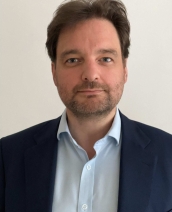Gregory Pankert
Managing Partner
Global Practice Leader, Telecommunications, Information Technology, Media & Electronics (TIME)
Gregory advises actors in the digital landscape on disruptive strategies and business-model redesign in rapidly converging ecosystems.

Education
Past Experience

Gregory Pankert is Managing Partner based in Arthur D. Little’s Brussels office and is leading our Global TIME (Telecommunication, Information, Media and Electronics) Practice.
He specializes mainly in market-entry and growth strategies, strategic asset reconfiguration, content strategies, and regulatory strategies with a focus on the telecommunication and media segments. Gregory has also built experience in supporting companies in Europe, the Americas, Asia and the Middle East on leading company transformation programs, helping clients define disruptive business models and strategies, and translating those into practice in terms of governance and organization redesign, post-merger integration, performance management, and change management.
Gregory is a Belgian national and speaks French, Dutch, English, and German.

Acing the regulatory exam

Migrating to the next network

CAN REQUIRED DIGITAL INFRASTRUCTURE OF SOUTHEAST ASIA BE BUILT PROFITABLY IN THE NEXT 5 YEARS?

Gregory Pankert is Managing Partner based in Arthur D. Little’s Brussels office and is leading our Global TIME (Telecommunication, Information, Media and Electronics) Practice.
He specializes mainly in market-entry and growth strategies, strategic asset reconfiguration, content strategies, and regulatory strategies with a focus on the telecommunication and media segments. Gregory has also built experience in supporting companies in Europe, the Americas, Asia and the Middle East on leading company transformation programs, helping clients define disruptive business models and strategies, and translating those into practice in terms of governance and organization redesign, post-merger integration, performance management, and change management.
Gregory is a Belgian national and speaks French, Dutch, English, and German.

Acing the regulatory exam

Migrating to the next network

CAN REQUIRED DIGITAL INFRASTRUCTURE OF SOUTHEAST ASIA BE BUILT PROFITABLY IN THE NEXT 5 YEARS?
More About Gregory
- Solvay Business SchoolCommercial Engineer
- AndersenManager
